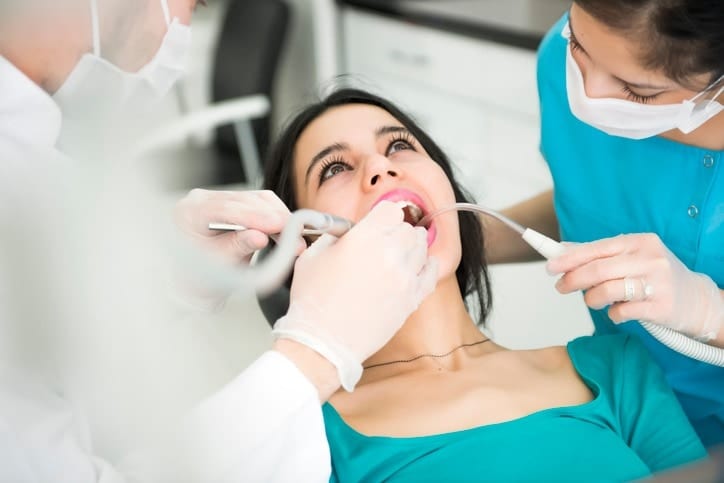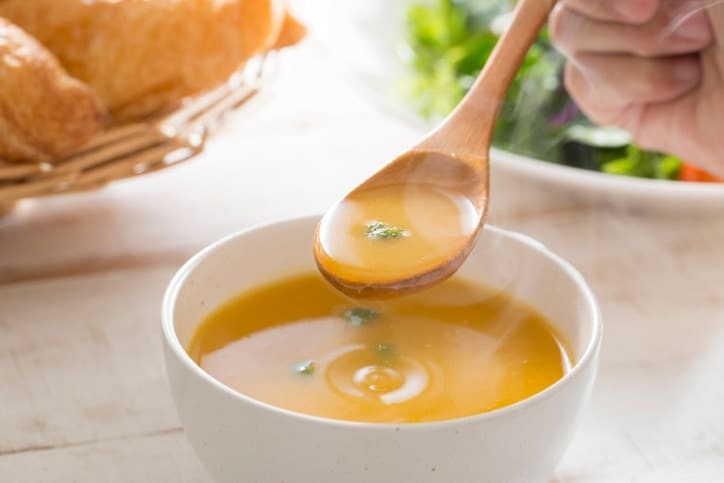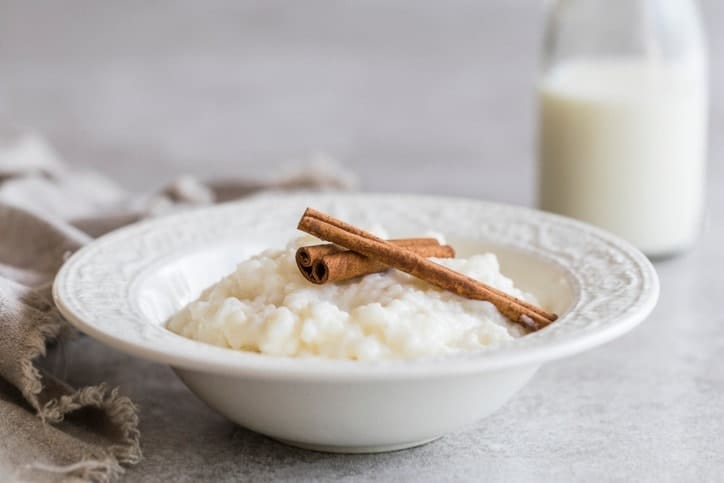Wisdom tooth removal is a standard dental procedure that usually lasts for a little less than an hour. Depending on the placement of your teeth and the number of teeth being removed, your dentist will decide on the ideal form of anesthesia. While the extraction itself does not cause much discomfort, the post-operative healing process can be uncomfortable if it isn’t managed by an experienced wisdom tooth removal dentist. Pain, inflammation and soreness can usually last for about 5 days, while the site where the tooth was removed can take up to 6 weeks to fully heal.

The food you consume after wisdom tooth removal can play a vital role in your recovery. Not only will eating the right foods accelerate healing but eating the wrong food can worsen your pain and significantly increase the risk of infection.
Here’s a quick rundown on the best foods to eat after wisdom tooth removal.
Day 1: First 24 Hrs After Wisdom Tooth Extraction
With your gums still numb from anesthesia, you may not feel much pain. Nevertheless, they’re likely to be hypersensitive at this point, so it’s best to stick with a bland, liquid diet.

Popsicles, ice creams and froyos
Ice-creams are recommended within the first 24 hours of wisdom tooth removal when most of the swelling occurs. The ice cream functions as a cold compress for any swelling, forcing the blood vessels around the extracted tooth to contract and reducing the fluid flowing into the surrounding tissues. Froyo or frozen yogurt is a healthier alternative if you want to avoid piling on empty calories.
Note: Stick to plain ice creams rather than chunky ones, which could get trapped in the gap and cause infection.
Fresh fruit juices, smoothies, milkshakes, curd and buttermilk
Fresh fruit juices are easy to consume, and if chilled, can be immensely soothing to those sore gums. Smoothies and milkshakes are also versatile ways to bring together ingredients of your choice to a liquid consistency. Not only do these liquids help meet your vitamin and mineral requirements, but when combined with a scoop of whey or protein powder, they can help you get the proteins you need for recovery. Curd and buttermilk are also great options if you’re on medication as they promote a healthy gut.
Blended soups and broths
Soups are easy to consume, rich in vitamins and minerals, and keep you well-hydrated. Make sure that your vegetables are either puréed or mashed to a smooth consistency. You could also add fresh cream, coconut milk and mild fresh herbs for extra flavour and an antioxidant boost.
Meat can be difficult to chew, but if you’re fond of meat, try a simple bone broth. Rich in amino acids like glycine and arginine, the broth can help you fight inflammation. Moreover, the gelatin in bones helps with digestion, a major consideration if you’re on painkillers and antibiotics.
Note: Avoid chunky soups as the pieces can get stuck in the gap and cause inflammation and infection.
Day 2: 48 Hrs After Wisdom Tooth Removal
After the initial pain wears off, you can move on to foods with more substance. However, since your gums are likely to still be sore at this stage, opt for semi-solid foods that are easy to swallow.

Mashed potatoes
With less than 200 calories per serving, mashed potatoes make for a nourishing and filling meal. High in potassium, they are great wound healers. Garnish them with butter, a mildly herbed gravy, or sour cream to add variety to your meals for the next few days.
You can also try sweet potatoes as they are a rich source of fibre. They are also packed with Vitamin B, C and D, and a host of minerals that aid in wound healing like iron, magnesium, calcium, potassium, phosphorus, zinc, thiamine and selenium, to name a few. They also contain carotenoids–a great source of antioxidants that protect your cells from day-to-day damage.
Puréed and mashed fruits
Fruits like banana and avocado are already soft, so Fruits like banana and avocado are already soft, so you can simply mash and chill them for a soothing treat. You can also steam or stew apples and other fruits, mashing them to a creamy consistency. For a more satiating, protein-packed meal, whisk fruits with a dollop of fresh cream (healthy fats) or crumbled cottage cheese (protein powerhouse).
Greek yogurt
Store-bought or homemade yogurts come in all flavours and can add variety to an otherwise limited menu. Its smooth and creamy texture is soothing to the gums. It is rich in proteins that are essential for recovery, as well as vitamins and minerals like calcium and zinc that promote healing and cell regeneration.
Pudding, jello, mousse
If you’re not on a diet, desserts like pudding, jello and mousse are perfect for sore gums. The calorie-conscious could try healthier variations; for example, you could replace sugar with natural honey, milk chocolate with dark chocolate, and store-bought whipped cream with a homemade one.
Days 3 to 5: 72-120 Hours After Wisdom Tooth Surgery
From here on, you’d have recovered sufficiently and can start incorporating softer versions of your regular food.

Eggs
Poached, scrambled, or half-cooked, eggs are rich in protein and zinc, both of which boost healing.
Soft fruits
From mashed bananas, you’re ready to progress to whole bananas and soft, fleshy fruits like plums and peaches.
Note: Refrain from fruits like strawberries as the seeds could get stuck in the cavity of the extracted tooth.
Fish
Tuna or salmon sandwiches served with soft bread will be easy on your gums. Tuna is packed with iron, omega-3 and potassium, while salmon is rich in protein and healthy fats. Usually served cold and shredded, they reduce inflammation and promote wound healing.
Rice congee/oatmeal porridge
While rice can be hard on teeth and gums, rice congee is nutritious and easy to digest. It is a high-carb diet, but the extra calories can make up for any calorie deficit you’ve experienced during the previous days. Use chicken, beef or vegetable stock as the base and introduce flavours by adding ginger, garlic, mushrooms, etc. Though generally served savoury or bland, congee can also double up as a dessert.
Instant oats are also an excellent high-carb option though they tend to be more sticky than rice.
Pasta
Pasta that is well cooked (not al-dente) is also an excellent calorie fix. Whole grain pasta is high in fibre and essential minerals. Manganese helps the body form connective tissue, promotes nerve function and aids in blood clotting, while selenium promotes healthy gums. Refined pasta, while typically not encouraged, is usually enriched. When taken in moderation, it can be a good source of folate, which boosts healthy cell growth and function. It is also rich in iron which fights inflammation, and niacin and riboflavin that are good for dental health.
Breads, pies, pastries
If the bleak diet of the past few days has led to sugar cravings, from day three on, you’re ready for small amounts of soft desserts like bread pudding, soft butter rolls and pastries!
Other Things To Consider

- Spicy foods can cause a burning sensation.
- Hot food can irritate your gums and increase swelling by dilating the blood vessels.
- Drinking with a straw increases the risk of dry sockets due to suction.
- Drinking acidic juices like orange juice could trigger a burning sensation.
- Avoid carbonated drinks and alcohol as they impede the healing process.
- Coffee and tea can be consumed but only at lukewarm temperatures.
- Toothpaste and medicated rinses can aggravate the open wound. Avoiding the area where the tooth has been removed, brush the rest of your teeth without toothpaste.
- You can also swish lukewarm water around your mouth to dislodge food particles. Do this gently to avoid removing the protective blood clot that staunches the bleeding. Adding salt to the water can expedite the healing process.
Need Advice After Wisdom Tooth Removal?

Getting your wisdom tooth removed by an experienced dentist will save you a lot of trouble. Our experienced dentists provide minimally invasive wisdom tooth removal. If you’re facing dry sockets or any other complications from your tooth extraction, visit our emergency dentists.
Contact us to book a free initial consultation.